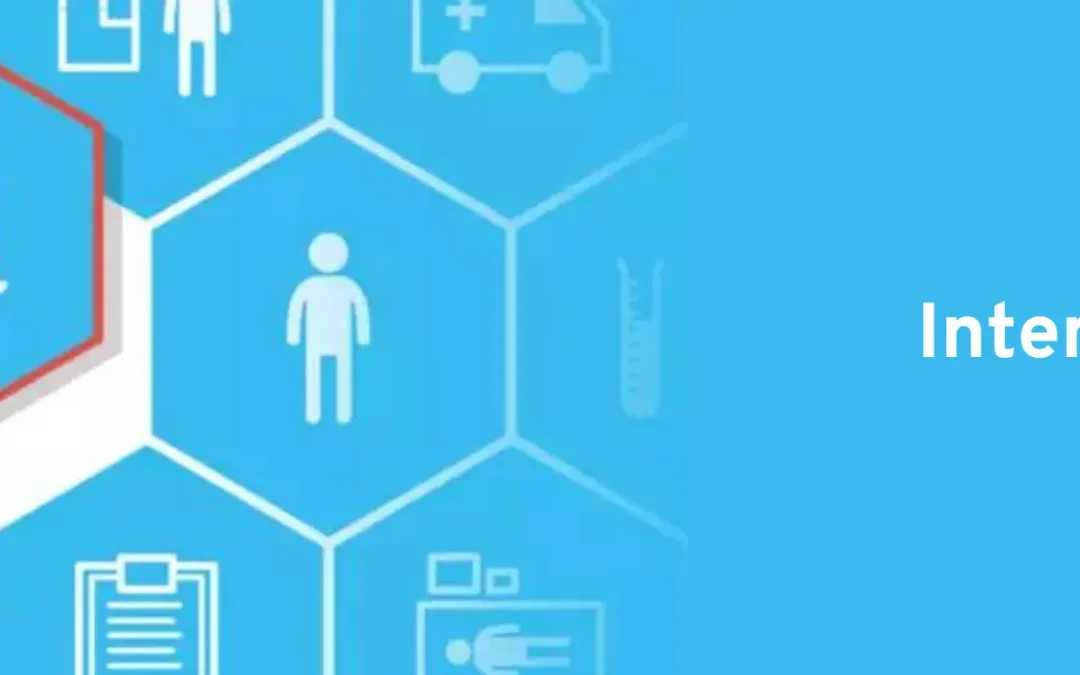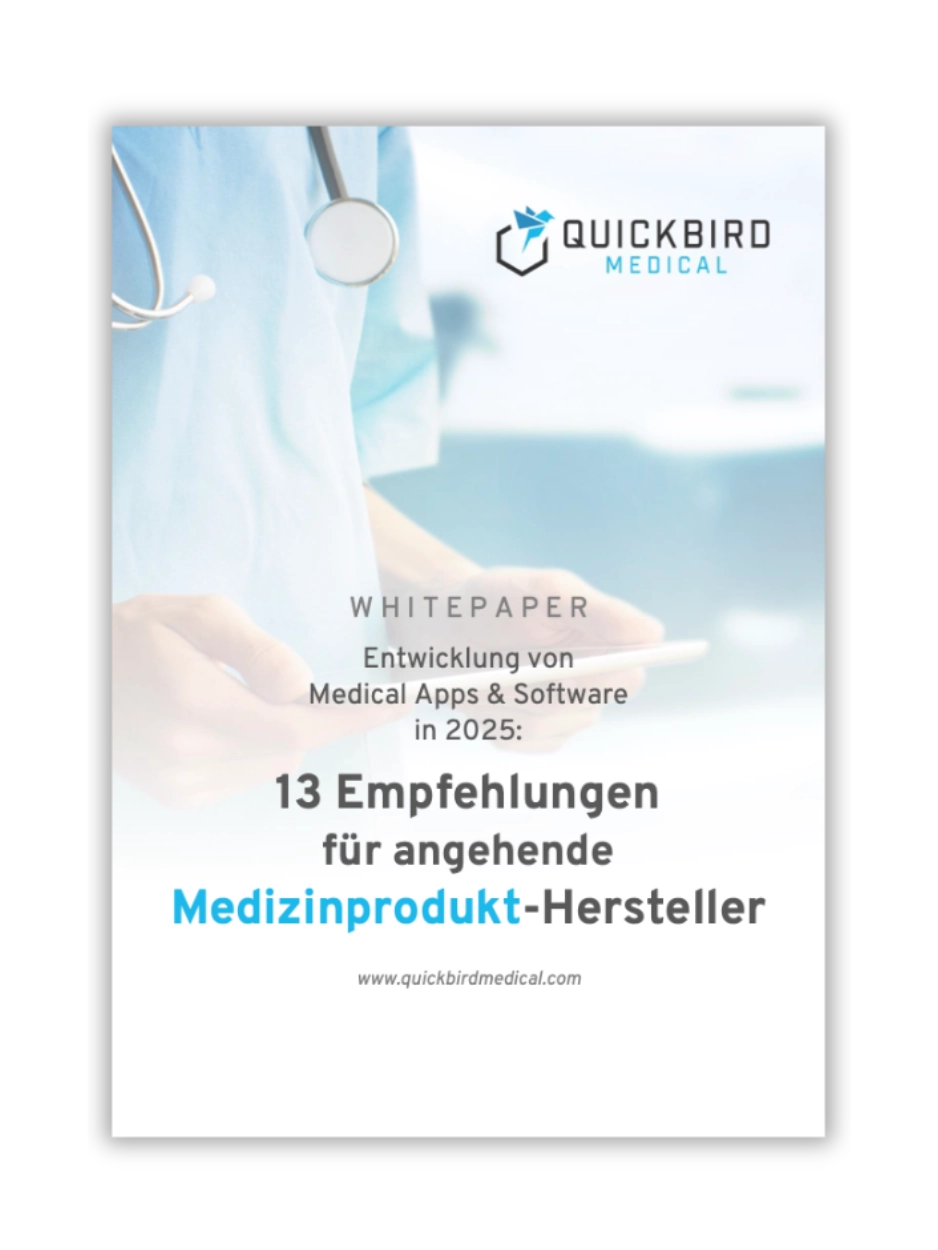A wide range of electronic devices are used in medicine, and medical apps are now also becoming increasingly common. However, a major problem to this day is that many of these devices cannot “talk” to each other: exchanging data is often difficult or impossible. In this area, the industry is lagging significantly behind technological progress.
However, this has less to do with technology and more to do with human coordination. Manufacturers of medical devices often do not coordinate the way in which these devices exchange data during development. This happens either due to a lack of communication or to tie customers to their own brand.
As a result, every device and every medical app has a different interface for data exchange and uses a different standard. It’s like the Tower of Babel: If everyone speaks a different language, everyone can say clever sentences – but no one will understand anything.
Read this article to find out how to implement the interoperability requirements for a digital health application (DiGA) in practice.
Table of contents
1. Levels of Interoperability
Due to increasing digitalization and networking, interoperability plays an immensely important role in medicine. It is therefore worth understanding exactly what is meant by this term and which aspects you need to take into account. Basically, interoperability refers to
the ability of different systems to work together.
A distinction is made between four levels:
- Structural interoperability
- Syntactic interoperability
- Semantic interoperability
- Organizational interoperability
The technical language makes this sound more complicated than it is. In the following, we explain clearly what is meant by these levels.
1.1 Structural Interoperability
The basic prerequisite for enabling data exchange between medical devices (or medical apps) is a data connection between these devices. This can be a simple cable that connects two devices with each other. Of course, each end of the cable must also fit into the socket of the respective device. If the connections are not compatible, even the best cable is useless.
This technical prerequisite for being able to send data from one device to another is known as structural interoperability. This includes standardized connections such as USB, but also data protocols that define how computers exchange data with each other, e.g. the Internet protocol HTTP.
An illustrative example from everyday life:
If you want to communicate with a friend, you must of course first create the technical conditions for them to be able to hear you and vice versa. You can create structural interoperability, for example, by both going into the same room or by getting a smartphone and exchanging your numbers or using a chat app.
1.2 Syntactic Interoperability
If structural interoperability is guaranteed, this does not mean that communication can take place. It merely means that data streams, i.e. packets of zeros and ones, can be exchanged between the devices. However, these have no meaning in themselves and can be interpreted differently depending on the standard.
The bit sequence 11110000 10011111 10010010 10001010 can, for example, stand for the number 504,623,697 or for the emoji . The bit sequence 01001000 01100101 01110010 01111010 can stand for the word heart or for a series of pulse measurement values: 72, 101, 114, 122.
Syntactic interoperability must therefore be used during development to ensure that individual information units are recognized correctly – or in other words: that the communicating devices speak the same language. There are general data standards for this, such as XML and CSV, as well as special medical standards such as HL7.
Example:
Suppose your friend reads you a story from a book. He speaks Korean and you speak German. (You don’t speak Korean yourself.) If you are in the same room, you can hear your friend (i.e. structural interoperability is established), but you can’t even work out which sounds together make up a word because you don’t know the language.
If you were asked to simply write down the words you hear and leave a space between each word, you would most likely fail at this task. Syntactic interoperability here would mean that you are able to put the words down on paper exactly as they appear in your friend’s book and that you also recognize which type of word each of these words belongs to (e.g. noun, verb, adjective, etc.).
1.3 Semantic Interoperability
Once the individual information units in a data set have been correctly recognized, the next step in development is to ensure that the receiver understands the same information units as the sender.
Example:
The word ICE means ice in English, for example, but in German it generally means a high-speed train.
In the same way, medical devices must have the same understanding of digital information. If, for example, a medical app receives the data 72, 101, 114, 122 from a measuring device, it must be clear whether it is the pulse measurement values of a day or the body weight values of a year. This is why the semantic level of interoperability is required, which ensures a common understanding of the information units of the systems involved.
Example:
Have you ever spoken to a digital voice assistant? Alexa, Siri or Google Home, for example? Then you’re probably familiar with the phrase, “Sorry, but I didn’t understand you.” In these cases, the voice assistant often understood your words but was unable to make sense of them. The semantic interoperability between you and your voice assistant is therefore often not given, as the technology only understands the semantics of simple sentences so far.
1.4 Organizational Interoperability
The last level is organizational interoperability. This is about coordinating processes across systems. For example, it must be ensured that doctors and medical staff have the appropriate authorizations to access patient data. Essentially, this is about defined roles, data security and standardized workflows so that the collected data can be used efficiently.
Example:
When your doctor sends you a diagnosis or an invoice via mail, you naturally don’t want the letter carrier to be able to read it. Many other people feel the same way – and not just in the medical field. Swiss Post has therefore established a process that ensures that only authorized persons can view your mail: The sender puts the mail in an envelope and seals it. Only the recipient opens it again, which guarantees data security. The letter carrier has a different role in this process and is not authorized to view the contents of the letter.
2. Interoperability Standards in the Medical Field
In order to achieve the greatest possible interoperability between medical devices, it is of course desirable to establish as few standards as possible. Unfortunately, this is not the case in the medical field. There are many different standards at different levels, most of which cover several levels of interoperability, but not all. These include, for example, the HL7, SNOMED CT, IEEE 11073 and DICOM standards. Due to the large number of standards, it is not easy to find the right one for your medical devices or applications. We will give you an overview of these standards in our next article.
3. Conclusion
Interoperability is and remains an important factor in medical devices and medical apps, without which no usable data can be exchanged between different devices.
In Germany in particular, a lot is currently changing in the area of healthcare digitization due to new laws such as the DVG, DiGAV or the Patient Data Protection Act.
Interoperability is currently becoming increasingly important. Manufacturers should therefore consider this from the outset during development and take all four levels into account. DiGA manufacturers can find out here how to meet the requirements for their app.




